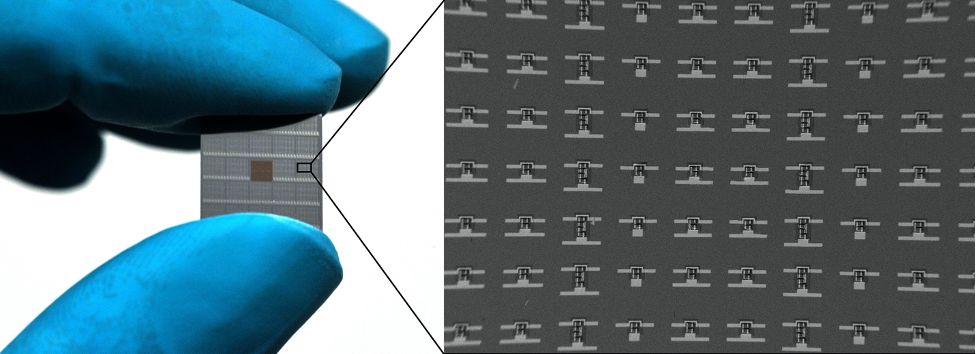
Marc Miskin, assistant professor in Penn Engineering’s Department of Electrical and Systems Engineering, has been awarded two young investigator projects in support of his research on microscopic robots.
This includes a three-year, $360,000 award from the Army Research Office Young Investigator Program (ARO YIP) and a three-year, $450,000 award from the Air Force’s Young Investigator Research Program (AFOSR YIP).

Miskin’s research involves the design of microscopic robots that can be mass produced using the technology involved in the manufacture of computer chips. Each robot is ten times smaller than the period at the end of this sentence and equipped with a power supply, silicon microelectronics for sensing and computation, and nanoscale strips of platinum metal that serve as legs. These strips curl up when a voltage is applied, so by strategically placing rigid plates on top of them, Miskin and his colleagues can get them to flex like the articulated legs of an insect.
Miskin’s research will be further explored in a project funded by his ARO YIP, which will investigate what’s possible with swarms containing tens of thousands of tiny machines. Each robot will be able to move, sense a chemical signal, change their local chemical environment, and transmit information about their current state. Moreover, Miskin and his team will be able to program these swarms of microrobots to organize, form patterns, and store and transmit information within the collective.
In his AFOSR YIP project, Miskin and his team will use these microscopic robots to create adaptive, programmable, and multifunctional materials. The material will consist of swarms of tiny robots and passive particles that the robots can bond together. Collectively, they can be used for various applications, ranging from sensing to self-healing.
Miskin sees these microscopic robots having a role in future unmanned aircrafts. As space is limited and there are no crew to make modifications or repairs, adaptive and programmable materials could make these craft more resilient and capable. With Miskin’s robots at work inside, a wing could also store energy and be used as a sensor.
“Cells work like tiny machines to build materials that are smart, adaptive and multifunctional, but are limited to the elements that are compatible with biology,” Miskin says. “With robots, we have different materials like silicon and platinum at our disposal. That gives us a new path to replicating nature’s strategy for smarter, engineered materials, using technology that humans can directly control.”
The Army Research Office is an element of the U.S. Army Combat Capabilities Development Command’s Army Research Laboratory.
